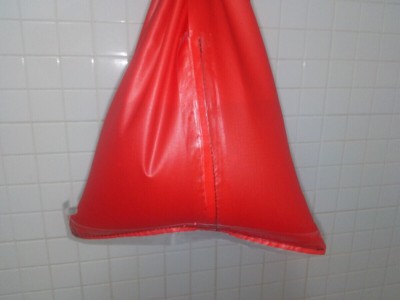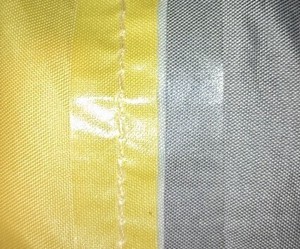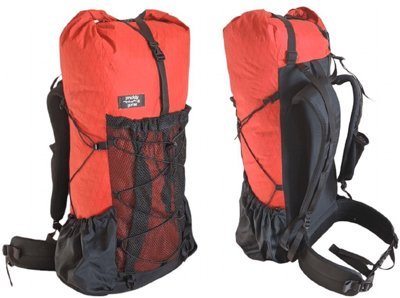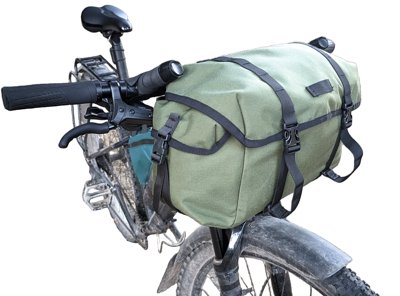Seam sealing is the process of applying a sealant to the seams of gear to make them waterproof. Although the fabrics might be waterproof, water can enter through the needle holes and between the fabric layers. There are two main types of seam sealing methods: seam tapes and liquid sealants.
Seam Tapes
Seam tapes are pre-made strips of adhesive-backed tape that are applied to the seams of outdoor gear made from waterproof fabrics. They are a quick and easy way to seal seams, but they can be difficult to apply in hard-to-reach areas or on items that have complicated seams and shapes.
Seam tapes are commonly used with fabrics that have a waterproof coating, such as polyurethane (PU), or a waterproof film and no backing fabric, such as XPAC X21 and DCF. They are especially effective at sealing flat seams that are not subject to a lot of movement or stress.
PU tapes are typically iron-on tapes, while tapes for film-backed fabrics are pressure-sensitive tapes.
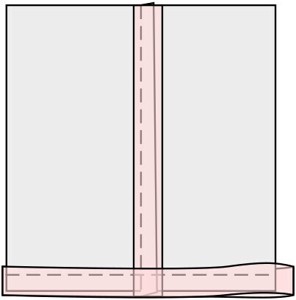
Liquid Sealants
Liquid sealants are applied directly to the seams of outdoor gear using a brush or roller. They create a flexible and durable seal that is able to move with the fabric, making them a good choice for gear that will be subjected to a lot of stress and movement. Liquid sealants can be used with a variety of fabrics and can seal areas that are very difficult to reach with seam tapes. However, they can be more time-consuming to apply than seam tapes and sometimes have strong fumes. Liquid sealants can benefit from being thinned by a manufacturer-recommended thinner. If you are using a silicone-coated fabric, you need a silicone sealant; otherwise, a PU sealant (e.g., McNett Seam Grip) will bond to most fabrics.
Final Notes
When sealing, you need to cover all the needle holes and the entire seam allowance. Water will get between the fabric layers if you only seal the needle holes but not the seam allowance as well. A flat-felled seam is narrower and lies flat compared to a simple seam, and is therefore easier to seal.
Seam sealing is very difficult to achieve fully at home, especially on more complicated designs, even with designing to allow flat felled seams. It might take many back-and-forth attempts to seal unnoticed gaps. Instead, it can be easier to consider other ways to waterproof your bags, such as sewn-in floating liners (see this sewing guide for an example), dry bags, and pack liners.
